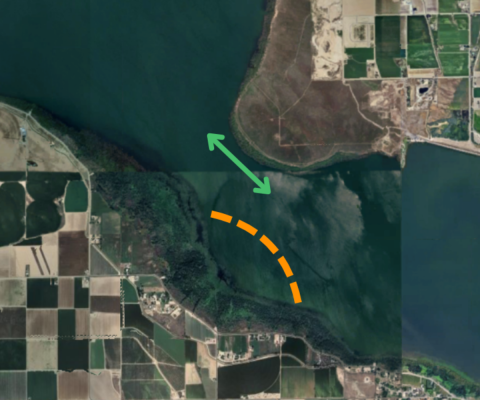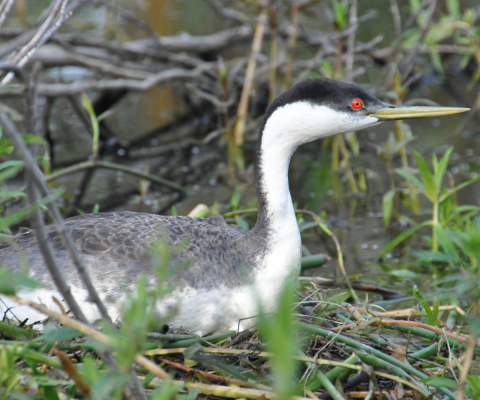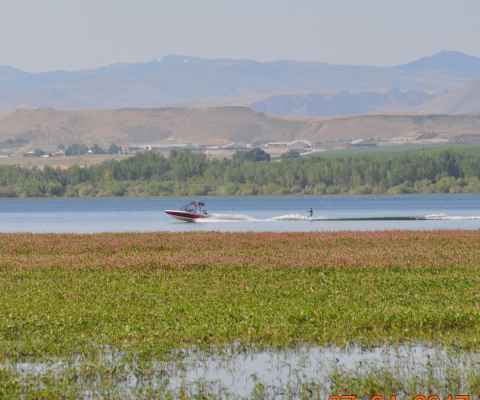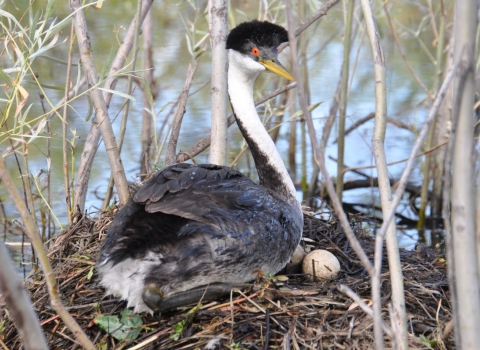Oh buoy, Lake Lowell is open and it’s time to enjoy the water! The lake offers various recreational opportunities while being an oasis for nesting birds. This season we’ve made some adjustments to our no wake zone in the Narrows area, as grebe nesting habitat has shifted.
No Wake Zone
When you are out on the water, you’ll notice buoys that signal boundaries, closed areas and permitted recreational activities. This year we’ve changed our no wake zone in the Narrows section of Lake Lowell, the narrowest middle section of the lake. In the past, you needed to slow down while crossing this area, but now you can go through the northeast side of the narrows without slowing down. The no wake zone is now concentrated on the southwestern portion of the Narrows as it contains prime habitat for nesting grebes. Another no wake zone is the eastern portion of the lake, which is also a nesting site for grebes. You may review the no wake zones on our refuge map, but note that it doesn't include this year's changes of the no wake zone at the Narrows. The following image details the new changes:
Nesting Grebes
Lake Lowell is one of the largest bodies of water in southwestern Idaho providing a top nesting site for grebes. These diving birds’ nest in colonies yearly on the lake due to its size and wide sections of floating vegetation near the shoreline - perfect for nesting and foraging. Keep an eye out for some key species which include the Clark’s and western grebe. These two grebes are considered Species of Greatest Conservation Need in Idaho, which is a proactive plan to conserve at-risk species. Both grebe species nest on the refuge and highlights the importance of protecting their nests and helping them be successful parents.
Wildlife and Water Recreation
While you're out on the water, remember that you're sharing it with nesting birds and other wildlife that use the lake as their home. Here are different ways that you can recreate responsibly:
- Keep a distance from nesting areas – give space to our hardworking grebe parents and you’ll be rewarded with grey, fluffy babies.
- Understand no wake zones – look for tall white buoys, with an orange circle in the middle and text that reads “No Wake.” This means slow down to minimize water disturbance. A wave near nests could flood their nests, knock over eggs and create unwanted disturbance.
- Look out for swimming grebes – grebe parents take turns incubating their eggs so one parent can go fishing. Please watch out for grebes in open water to avoid a collision.
- Know refuge regulations – stay informed on what is allowed on the refuge by reviewing our Facility Rules and Policies page.
- Recreation on the water – the lake is open for visitors to enjoy. Review our Activities page to see what you can do while exploring your refuge!







